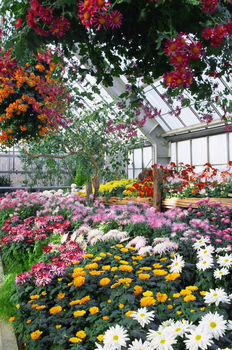How to Plant a Garden
Gardening is a popular hobby for people around the world, but many people aren’t sure how to plant a garden. For many, gardening is much more than just a pastime. In many cultures, gardening is a mark of self-sustainability and a way of life.
Home-growing vegetables can be a cost-effective method of getting produce. Anyone can garden, with some basic knowledge and a little hard work.
Choosing an Area for the Garden
When learning how to plant a garden, selecting an area for planting is the first step. Choosing the right spot ensures your plants have every opportunity to thrive.
Place the garden plot away from any buildings or trees, since these block valuable sunlight. Place the plot near enough to a water source, like a house spigot.
Protect the area with a fence. Your garden fence doesn’t have to be as high as a typical backyard fence, but tall enough to shield it from rabbits and other rodents that could disturb the garden’s contents. Add chicken wire between the fence posts, or ensure the fence posts are arranged close together.
Sunlight in the Garden
Select a plot that gets good exposure to sunlight, especially in cold climates. Start with a small garden, if you’re an inexperienced gardener. Expanding the garden in future seasons is a better alternative than taking on too much and letting plants die in a garden that is too big.
Examine the soil in your area of choice. Clay-based soil and sandy soil are not ideal for most crops. Apply compost to the ground if you have clay or sandy soil.
Garden Planting Tip
Take note of the garden plot after a heavy rain. Fill in low areas that collect water with extra soil.
Preparing the Garden
Add organic matter to the soil to enrich it—dead leaves, manure and peat moss serve as great supplies of nutrients. Soil is broken down into three general types.
- Sandy – Large particles, does not retain water and nutrients well.
- Clay – Small particles, holds in water, changes temperature slowly.
- Loam – Variety of particle sizes, lots of organic matter, drains well.
Add organic material prior to planting, but also add it throughout the year, to continue to supplement soil nutrients. As for pH levels, most plants thrive in slightly acidic soils (pH between 5 and 7).
Planning the Garden

How to Plant a Garden
Plan the garden ahead of time; map out planting locations during the fall or winter, before planting in the spring. Remove the grass and other obstructions from the desired area.
Use a shovel and spade to loosen up the top 12 to 18 inches of soil, taking out rocks, sticks and other objects that could interfere with the planting. Create planting rows, leaving enough space between each one to walk without disturbing the future plants.
Add four inches of organic material to the top of the plant beds, to even out the topsoil. Rake the soil until it is fine enough to plant. Leave the more coarser soil beneath, to maximize water retention.
Add fertilizer about two weeks prior to planting, making sure the fertilizer is rich in phosphorous and nitrogen.
Planting Rows
While rows are ideal for most garden plants, not all crops can be planted in rows. Plant corn in a square or rectangular block, to allow it to be pollinated. Each particular seed packet provides specific instructions about row spacing and seed placement.
Create small furrows (about a half inch deep) to hold your seeds. Place several seeds in each hole, unless the seed packet specifies otherwise. Cover the seeds with loose soil.
Tending to the Garden
Weed the garden on a regular basis. Consider laying down mulch, if weeds become a big problem. Mulch prevents sunlight from reaching the soil surrounding your vegetables, making it difficult for weeds to grow.
Maintain consistent water flow to the plants. Ensure your garden plants receive at least one inch of water per week, including rainwater. Do not water the plants just before sundown.
Special Planting Tips – How to Plant a Garden
Use only old manure as a fertilizer. Fresh manure can be harmful, especially to young plants.
As a rule of thumb, leafy plants demand more fertilizer than pod plants.
Store seeds in a cool place like a basement or cellar when not in use to ensure they remain fresh.
Crop rotation can reduce disease. Consider planting different vegetables in a particular area of the garden year after year.
Be sure to know how long seeds tend to keep. Some seeds, like onions, last only a year while others, such as lettuce, can last up to six.
Harvest vegetables in the morning, after the dew is dried.
Be creative in planting your garden and, with practice, you’ll find what you enjoy growing best. Caring for your garden properly ensures food on your table all summer long, once you master how to plant a garden.
